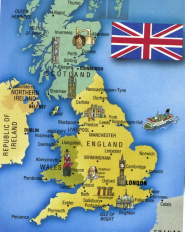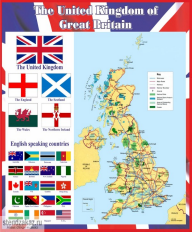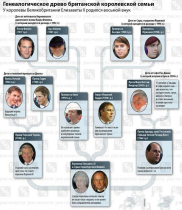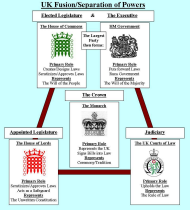The theme of the lesson: Great Britain. Political system of Great Britain
Date: 08.12.14
The subject: English
Group: 2-топ
The aim of the lesson:
I. Educational: To give main information about Great Britain, its history, Political
system, transport and sights.
II. Development: To improve students’ skills in monologue, skills of listening
comprehension and skills in reading;
To develop students’ love and pride to their capital.
III. Bringing up: To interest in learning English;
To teach students to love their Motherland and respect the culture and traditions of other countries.
Type of the lesson: Combined and Revision lesson.
Method of teaching: elements of game technology, three dimensional training system.
Interactive link: Geography, Kazakh, History, Maths.
Visual aids used at the lesson: interactive board, slide show, cards, the map of the UK
Type of lesson:
Procedure of the lesson:
Organization moment:
- greeting the class and the guests:
Good morning, students. Sit down, please.
How are you? Who is on duty today? Who is absent?
- Speech drill:
What season is it now?
What is the weather like today?
Is it cold (frosty, snowy, foggy, windy, sunny)?
What month is it now?
When is your birthday?
Checking up the home task
- Leading questions
- Give general information about The United Kingdom, Kazakhstan and its nation
- Check up students’ vocabulary taken at the previous lessons with the help of guessing the crossword.
British Museum, Oxford Street, Tower of London, Natural History Museum, London Bridge, Khan Shatyry, Akh Orda, Central Concert Hall, Big-Ben, Baiterek, Hyde Park, Duman, London Eye, Сity hall, Kozha Akhmed Yasaui Mausoleum , Buckingham Palace, St Paul's Cathedral, Aksu-Zhabagly, Atyrau History Museum, Medeu;
Divide these names of places of interest into two groups: group 1 - the words used with an article “the”, group 2 - the words used without an article “the”.
- Now let’s remember what we know about London and Astana.
II. New theme of the lesson:
а) introduction of the lesson’s theme.
Today we’ll continue speaking about Great Britain, its history, transport and sights. You know this year we’ll celebrate twenty one years of independence of our republic. So we’ll spoke about our country Kazakhstan too. But first of all new words.
New words
agree Келісу, к?ну
almost дерлік
cotton ма?та
damp* дым?ыл
deep Тере?;
electric электр
flat Жерді? жазы? беті, тегіс
goods* Заттар, товарлар
include ?осу, кірістіру, ішінде
Industrial ?нер к?сіпші, индустриялы
industry ?нерк?сіп, индустрия
iron темір
separate Б?лу, б?ліп т?ру
island арал
surface Беті, ?стінгі
unite Бірлестіру, біріктіру
north солт?стік
west батыс
south о?т?стік
GREAT BRITAIN
Now you’ll listen to the text about “GREAT BRITAIN” Listen to attentively. After that you’ll do some tasks.
(Teacher is reading the text.)
(Look at the map and listen to the speaker.)
The British Isles lie in the north-west of Europe. They consist of two large islands, Great Britain and Ireland, and many smaller ones. Great Britain the largest island in Europe, includes England, Scotland and Wales. It separated from Ireland by the Irish Sea, and from the Continent by the English Channel and the Straits of Dover. Great Britain and Northern Ireland form the United Kingdom (UK).
The surface of England and Ireland is flat, but the surface of Scotland and Wales is mountainous. The mountains are almost all in the western part. The highest mountain in the United Kingdom is Ben Nevis in Scotland (1343 m). The longest river is the Severn. It is in the south-west of England. The Thames is not so long as the Severn, it is shorter. The sea enters deeply into the land and has a great influence on the climate, which is damp but rather mild: the winter is not very cold and the summer is not very hot.
Over 57 million people live in the United Kingdom. Most of the people of Great Britain live in big towns and cities.
The capital of the country is London. The main industrial centres are Sheffield and Birmingham where iron goods are made, Manchester, the cotton centre of England, and others.
The important ports of the country are London, Liverpool, Glasgow and others.
The teacher: The Union Jack is the popular name given to the flag of Great Britain. It is a mixture of several flags. It all began in 1606 when Scotland was joined to England and Wales.
P1: The Scottish flag is blue with a white cross from corner to corner. Its symbol is the thistle.
P2: The English flag is white with Red Cross. Its symbol is red rose.
P3: The Irish flag is white with a red cross from corner to corner. Its national symbol is a shamrock and a red hand.
P4: The Welsh flag is white and green with a red dragon in the middle of it. Its symbol is daffodil.
We have known symbols, flags and capitals of each part of the UK.
с) Answer the questions using the map.
1. Where do the British Isles lie?
2. What does Great Britain include?
3. What do Great Britain and Northern Ireland form?
4. What is the highest mountain in the United Kingdom?
5. What are the biggest rivers in Great Britain?
6. What is the capital of the country?
7. What are-the industrial centres of Great Britain?
8.What are the ports of the country?
f) Quessing game “What place of interest am I?” Pupils, look at the blackboard, here are given pictures and the definitions of each picture, your task is to find the name and the right definition to each sightseeing.
- It is a place where mass meetings and demonstrations take place. It is in the centre of the west End of London. (Trafalgar Square)
- This is the place where members of Parliament gather to make laws. (The Houses of Parliament)
- It is the great bell clock which strikes the hour.( Big Ben)
- It is the largest and richest museum in the world. It was founded in 1753. It has mountains of books. (British museum)
- It is the most famous historical building in London which was built in the 11-th century. (The Tower of London)
- It is the place where the Queen meets important visitors such as kings, queens or presidents. (Buckingham Palace)
You must write answer on the following way, using only figures and letters
- Pupils, we`ve done a lot of tasks concerning? The UK. Let`s conduce our lesson.
7. Reading the text.
If it has two floors it’s called a double-decker and you can get a good view from the top level. If it has only one floor it’s called a single-decker.
Buses have a two person crew it’s a driver who drives, of course, and the conductor (or conductress if it’s a woman) who takes your money. Keep your ticket as the inspector might want to check it. You catch a bus waiting at a bus stop.
For longer distances take a long distance bus called a coach which is slower but cheaper. A double-decker bus has an upstairs (top) and downstairs (inside). - 7.1. What is the difrence between ....
-
a. conductor and conductress,
b. inspector and bus driver,
c. single-decker and double-decker,
d. bus and coach.
7.2. Complete the dialogue.
The UK London a double-decker bus the top level
-Would you like to travel by .........?
- Yes, I think you can see a lot from ........ of it.
- Can you travel by double-deckers only in .......?
- Red double-decker buses are a typical picture in London but two-level buses run in many towns of...... . -
9. Marks and home task: Thank you very much. You have worked well today.
Your homework will be: ex.6.
To compare the system of public transport in London and Astana.




























